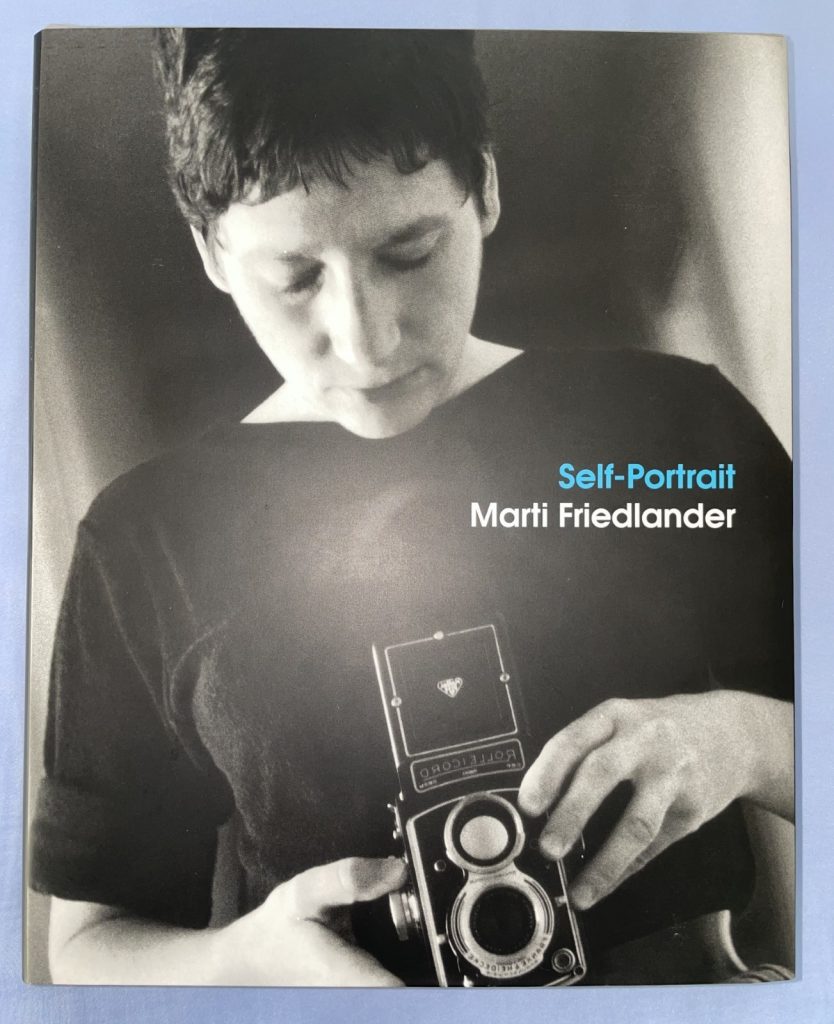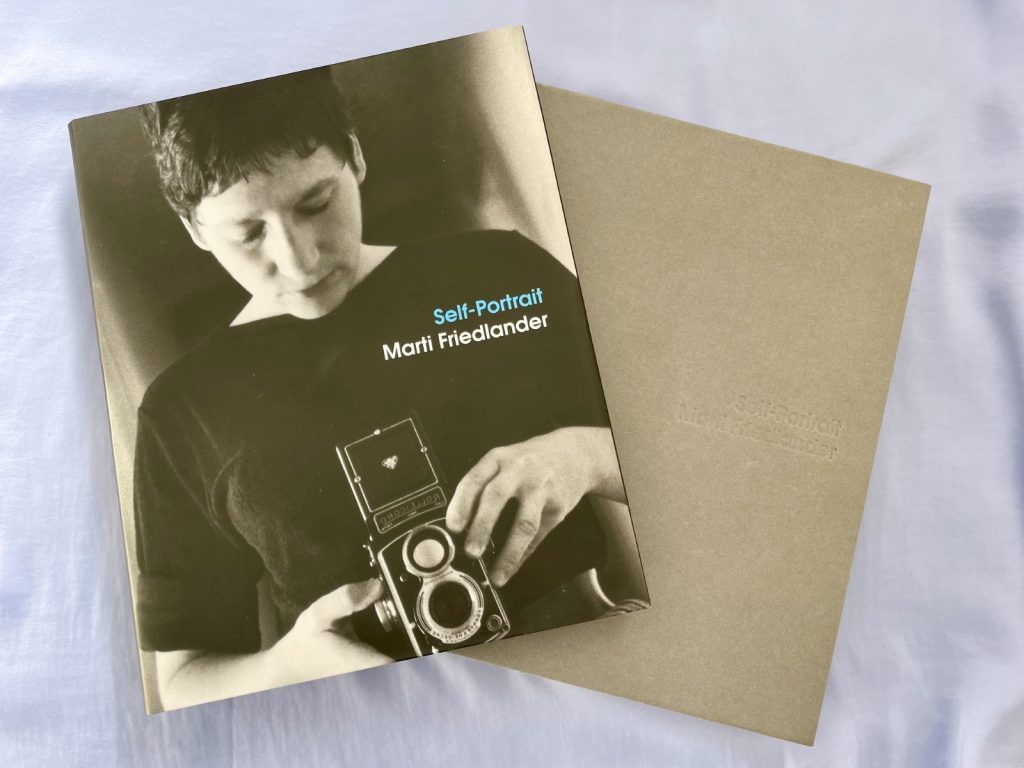Post cooked up by Jen Anderson, Collections Assistant – Publications
People who work with heritage material often find themselves compelled to demonstrate its relevance to contemporary society. Some connections are obvious, and some require a little more lateral thinking. Initially I intended to justify this carrot-themed post via the Easter bunny, but having tasted the results of my carrot salad attempt, I realise that it more readily fits Lenten themes of mortification and repentance.
The recipe I tried comes from : Celebrities’ choice cook book : a unique collection of recipes from N.Z. celebrities / [compiled by the Canterbury/West Coast Region of the N.Z. Red Cross Society].
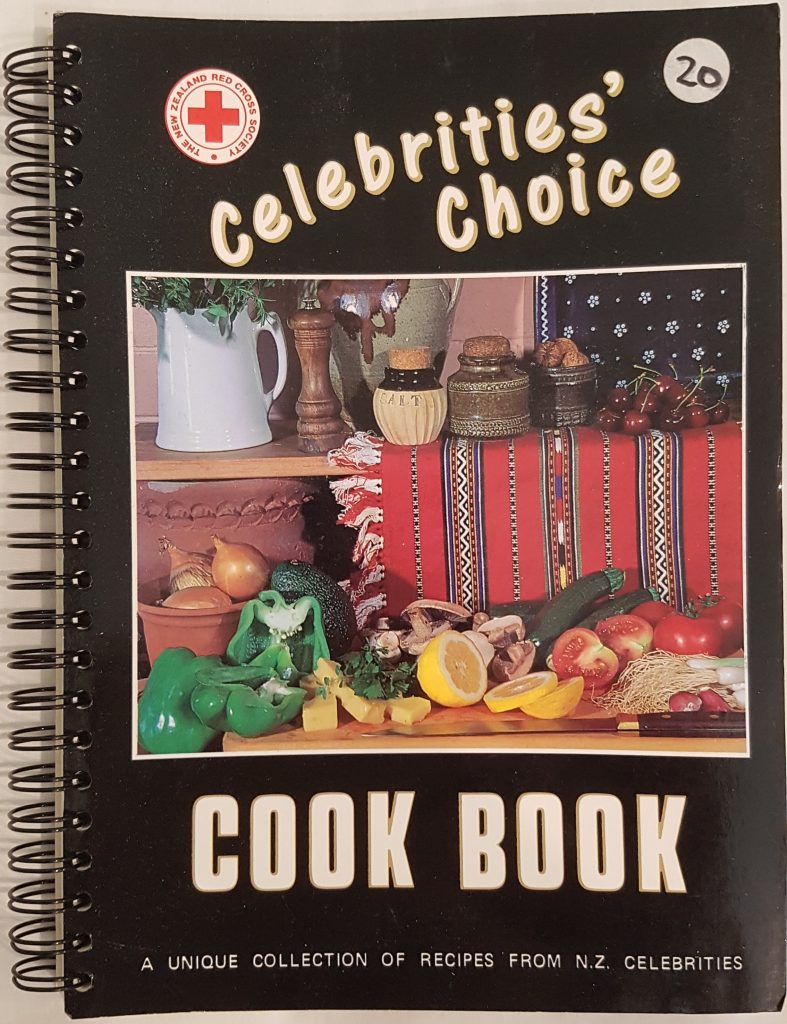
Vegetables, fruit, textiles and earthenware: the enticing cover of
‘Celebrities’ choice cook book : a unique collection of recipes from N.Z. celebrities’.
This book was published in 1991, but being a compilation of tried-and-true favourite recipes, it is a veritable time capsule from the pantheon of NZ’s illustrious. Ever wanted to try Geoffrey Palmer’s chili con carne? How about Judith Kirk’s fish bake? I was tempted by The Wizard’s microwave chocolate self-saucing pudding, but in the end there was only one possible recipe.
Deep breath.
Carrot salad.
Now, I’ve always had a troubled relationship with cooked carrots. This is the legacy of childhood memories of carrot disks in casserole, the brimming-with-flavour carrots and white sauce, and – horror of horrors – mashed carrot and parsnip [a.k.a. rainbow vegetable]. Normally a carrot salad would bypass the cooking, but this recipe is a little different. It starts out reasonably; carrots, green pepper, onion, salt. It is in the second column of ingredients that you really start questioning the life choices that led you to this point.
1kg carrots
1 green pepper
1 onion
1 (450g) tin tomato soup
1 cup sugar
½ cup cooking oil
½ cup vinegar
Pepper and salt
Instructions follow:
Cut carrots in rings and cook.
Chop the green pepper and onion and cook in tomato soup, sugar, oil and vinegar.
When cooked mix in the cooked carrots.
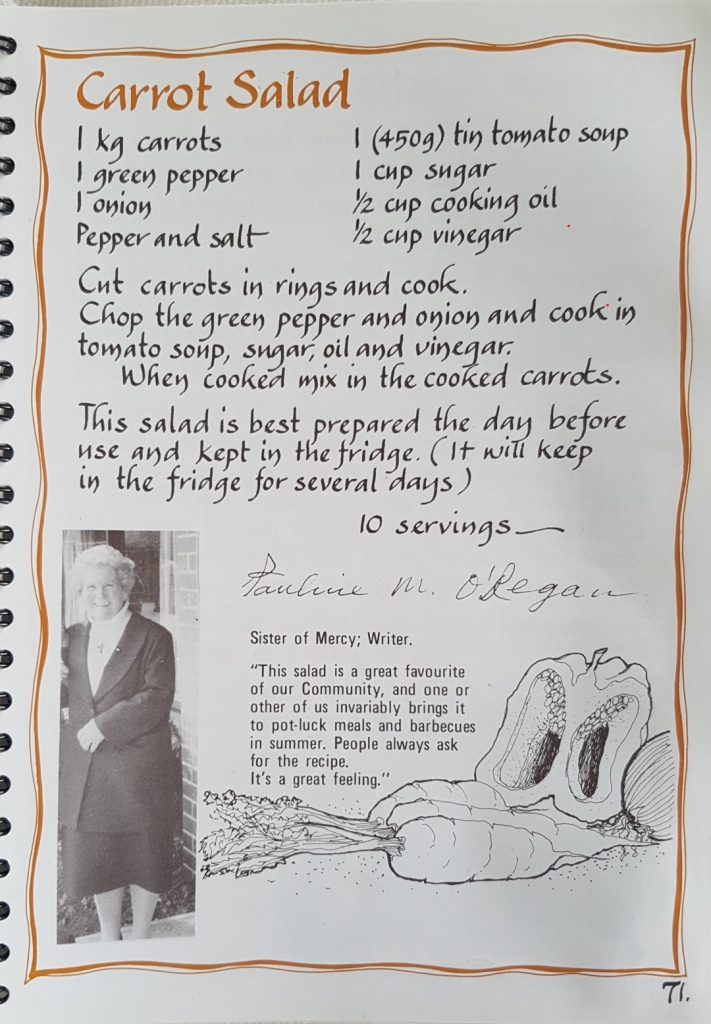
The recipe for the inimitable carrot salad
I’m not much of a chef, but looking at the recipe you’d think it wasn’t complex. What could possibly go wrong? I don’t know what I did, but my creation would not elicit the rapturous community response received by the author, Sister Pauline M. O’Regan.
“This salad is a great favourite of our Community, and one or other of us invariably brings it to pot-luck meals and barbeques in summer. People always ask for the recipe. It’s a great feeling.”
I trust Sister Pauline O’Regan implicitly. She sounds like an extraordinary person who did a lot of good for her communities while authoring some very well -regarded books. Going by this photograph on Te Ara, she also knew how to host a successful casual outdoor gathering. Surely the problem was not the recipe, but my execution.
Look at what I made. Empty your mind and just look at it.
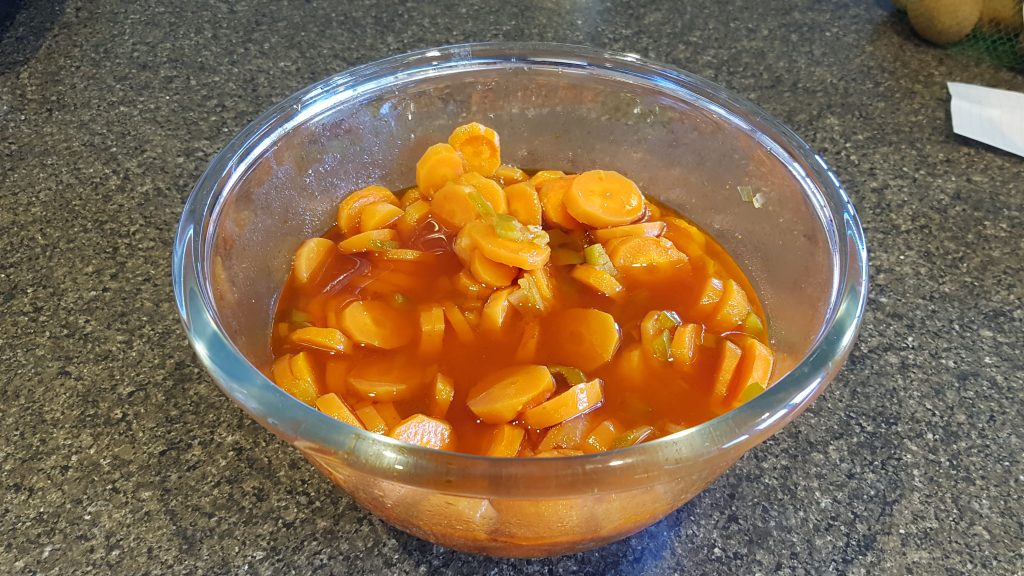
The pièce de résistance
I tried some fancy plating, but it was irredeemable.
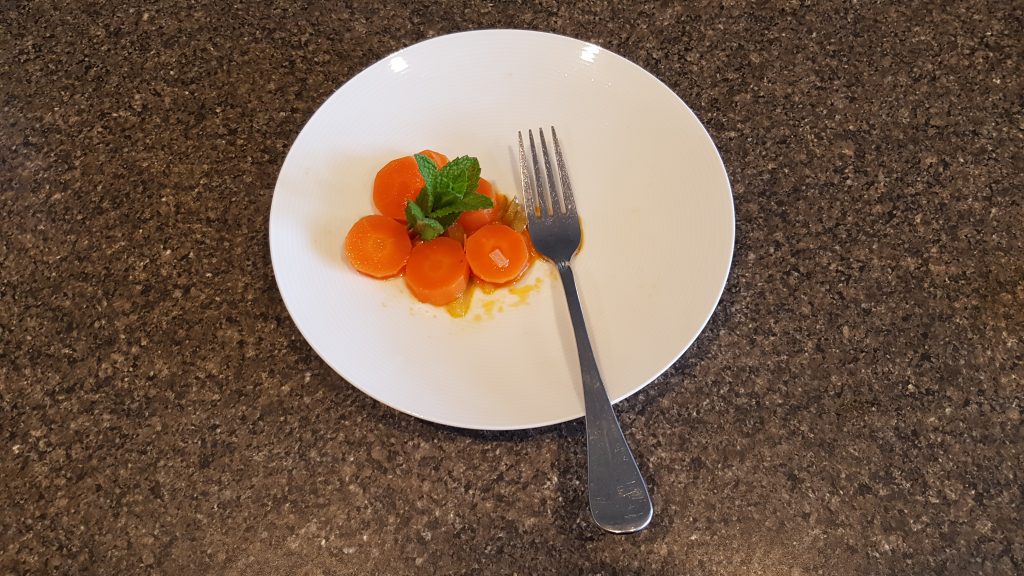
The salad, plated. Enough said.
I was left with a catering sized supply of cooked carrot salad which, under COVID restrictions, could not be shared with my delightful colleagues.
The thick layer of oil wasn’t even the worst of it. Nor was the tooth-aching amount of sugar. No, it was the sheer ratio of dressing to carrot. Believe me, I boiled 450 g of tomato soup and vinegar mix ferociously in an attempt to reduce it. The kitchen was filled with a vinegar-tinged miasma. The capsicum had lost structural integrity and the onion was slimy yet the mixture defied attempts at evaporation. Eventually I gave up and added the carrot (cooked al dente, although I know the original 70s version would have been for 30 minutes or until done).
The sound when I stirred it haunts me to this day. I don’t know how to describe it. Loose wallpaper paste? Creamed corn with clumps? Whatever it was, it was eldritch. This looked and smelled like something that, if consumed, should be done so in private mortification while crying. Dear reader, I tried a tentative forkfull and was hit by sugary carrot overlaid with vinegar and an oily finish. It was Not Nice.
In a Hail Mary I tried following the recipe recommendation: “This salad is best prepared the day before use and kept in the fridge (it will keep in the fridge for several days).” The flavour may have infused overnight, but it certainly didn’t improve. Perhaps it is best described as entrenching. I left the salad in the fridge for several days and I can verify that it is a very low theft risk because no-one else in the household touched it.
I don’t doubt that this recipe can be executed well. I’ve talked with people who remember it fondly from their BBQ and salad days. Tell me, dear readers, how did I mess it up so catastrophically? Can someone explain how to cook this properly? Maybe a 450g tin of soup is inclusive of tin weight, so I measured out too much? Should I have chosen a better vinegar? Was the pepper and salt quantity lacking? Does anyone have any advice for attempt #2, the one where I make colleagues eat and review it? Tell me about your success stories. Or do you have a more entry-level carrot salad recipe to suggest?
What else have we cooked up?
Stirring up the stacks #9: two for the price of one! Macaroni soup and ginger pudding
Stirring up the stacks #8: Xmas Cake Recipe Recommended by “Buckhams”
Stirring up the stacks #7: Virginia pudding
Stirring up the stacks #6: Pumpkin pie
Stirring up the stacks #5: Sauerkraut roll
Stirring up the stacks #4: A “delicious cake from better times”
Stirring up the stacks #3: Bycroft party starters


